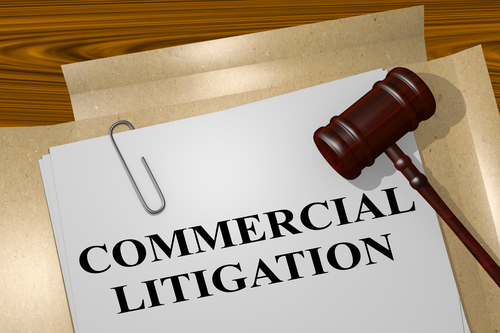
The Commercial Division employs its own statewide rules, located at 22 N.Y.C.R.R. § 202.70, which significantly augment New York’s Civil Practice Law and Rules (“CPLRâ€). These rules are tailored to promote efficiency and fairness to commercial litigants and provide them advantages over litigating in the regular Civil Branch. Among these advantageous rules are:
- Proportionality
- The preamble and guidelines of the Commercial Division Statewide Rules state that principles of proportionality apply to discovery.
- Optional Accelerated Adjudication
- Rule 9 of the Commercial Division Statewide rules permits parties in all actions other than class action to accelerate litigation, with the intention of ensuring that all such actions are trial-ready within nine months from the date of filing.
- Depositions
- There is a presumptive limit of ten depositions per side with each lasting presumptively no more than seven hours.
- Depositions of Entities
- Pursuant to Rule 11-f, parties may subpoena and examine at deposition entities by questioning an individual designated by the entity to be examined.
- Limits on Interrogatories
- Pursuant to Rule 11-a, the Commercial Division generally limits the number of interrogatories to 25, including subparts, and limits interrogatories during discovery to:
- names of witnesses with material knowledge or information;
- computation of each category of damage alleged; and
- the existence, custodian, location, and general description of material and necessary documents.
- Pursuant to Rule 11-a, the Commercial Division generally limits the number of interrogatories to 25, including subparts, and limits interrogatories during discovery to:
- Streamlined Privilege Logs
- Rule 11-b states that the Commercial Division prefers that parties use categorical designations to reduce the time and costs associated with preparing privilege logs.  Accordingly, the Commercial Division may, upon application by the burdened party, require the party who insists on document-by-document privilege log listings to pay costs and attorney’s fees associated with their creation.
- No Boilerplate Objections to Document Requests
- Pursuant to Rule 11-e, the Commercial Division requires parties to either:
- state that the production will be made as requested; or
- state with reasonable particularity the grounds for any objection to production.
- Accordingly, parties can no longer object to document requests with broad, vague language.
- Pursuant to Rule 11-e, the Commercial Division requires parties to either:
- Streamlined Discovery Disputes
- Rule 14 provides that, in the absence of a specific judge’s rules, parties must seek a pre-motion court conference concerning a discovery dispute via submission of letters of up to three pages, saving clients the substantially greater expense and delay of motion practice.
- Standardized Confidentiality Order Form
- Pursuant to Rule 11-g, the Commercial Division encourages parties to use the Confidentiality Order Form located in Appendix B of the statewide rules and requires parties who resist this practice to provide a written explanation of why deviations are warranted.
- Settlement Conference Before Non-Presiding Justice
- Pursuant to Rule 3(b), the Commercial Division permits parties (upon joint request by counsel) to proceed with a settlement conference before a justice other than the justice assigned to the case.
- Testimony by Affidavit
- Pursuant to Rule 32-a, the Commercial Division may require that the direct testimony of a party’s own witness in a non-jury trial or evidentiary hearing be presented in affidavit form.
- Time-Limited Trials
- Pursuant to Rule 26, the Commercial Division requires parties to furnish the court with a realistic estimate of the length of the trial at least ten days prior to the trial.
- Monetary Thresholds
- Of the ten jurisdictions which have one or more Commercial Division judges, six counties in or near New York City have the following minimum monetary thresholds to bringing an action in their courts to promote efficiency:
- Kings County: $150,000
- Nassau County: $200,000
- New York County: $500,000
- Queens County: $100,000
- Suffolk County: $100,000
- Westchester County: $100,000
- Of the ten jurisdictions which have one or more Commercial Division judges, six counties in or near New York City have the following minimum monetary thresholds to bringing an action in their courts to promote efficiency:
As illustrated, the Commercial Division’s rules and procedures are designed specifically for the needs of commercial litigants, making litigation more time and cost efficient, more predictable, and more hospitable to complex commercial cases. Having a lawyer with substantial experience in, and a deep understanding of the rules and procedures of, the Commercial Division can be vital to success in commercial litigation.

830 Third Avenue, 5th Floor
New York, New York 10022
TEL: 212-600-9539
FAX: 212-840-8560
rfriedman@richardfriedmanlaw.com
www.richardfriedmanlaw.com
www.richardfriedmanlaw.com/blog
Connect with me on Linkedin
